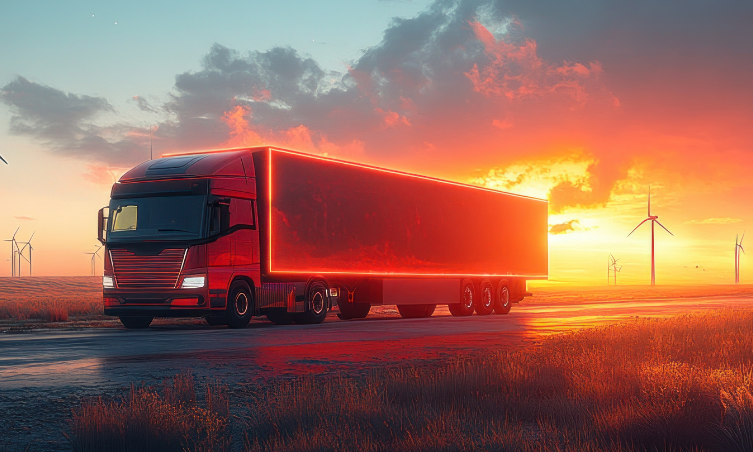5 minute read
Are businesses prepared for the challenges required to future-proof commercial transport?
Leading brands and growing businesses are consistently looking to strengthen their supply chains, harness the benefits of new technologies, boost productivity and enhance efficiency.
With the logistics sector at a critical juncture on its path to sustainability, understanding where businesses are as they progress on this journey is vital to ensuring commercial transport operations are fit for the future.
Start small, scale fast
Earlier this year Wincanton announced its multimillion-pound investment in cutting edge electric HGV technology. Wincanton has already gained valuable insights as to how these vehicles will drive further efficiencies and carbon reductions, both in our operations and for our customers, shaping a more sustainable future for logistics.
The new vehicles will be able to operate at more than 40 tonnes and will help the business to lay the foundations for decarbonising its fleet at an even greater scale. To support the new trucks, Wincanton is rolling out depot-based charging infrastructure across key sites.
Electrifying an HGV fleet means starting small so you can scale fast. The electric HGVs which form part of the test and learn initiative compromise just 1% of Wincanton’s total HGV fleet, the business is learning very quickly how these trucks work for our customers, with charging infrastructure, charging cycles and payloads at the forefront of discovery.
A stronger road map
If commercial transport is to electrify at pace, it requires consistent and reliable access to electricity.
The good news is the UK has one of the most robust networks globally, but total capacity in its network will not be enough for full fleet electrification in the future. The types of customers demanding electricity are growing from the traditional base of homes and industry and now incorporates data centres and charging infrastructure. This impact on the network is the biggest challenge it faces since privatisation.
For the UK to generate the power the country needs, and for businesses to deliver reliably and with resilience in the future, the transport sector needs to make its case today. This requires a better understanding of where and when a vehicle is fuelled, what the impact on payloads means for fleet utilisation and how logistics models will change to continue to drive efficiencies.
More data, more learning and more insights from the use of alternative fuels will create a stronger road map for the future of transport.
Understand the variables
The route to future-proofing transport will not be straightforward. The promise of alternative fuels such as electric, hydrogen and biofuels including Hydrotreated Vegetable Oil (HVO) offer hope for a more sustainable future, but their widespread adoption will not be an immediate quick fix.
Some organisations are already leaning into such solutions, be it electric fleets for home delivery in urban areas or biofuels which minimise carbon emissions and reduce the impact transport has on air quality. But for others, particularly fleets with more specialised vehicles, the technology to simply replace one diesel-powered vehicle with an alternative fuel powered vehicle is not viable, nor commercially available.
One learning that is already clear is that the path to sustainability requires a mindset of doing logistics differently. This means embracing digital technologies, such as Wincanton’s digital transport solution, EyeQ, to drive efficiencies in route planning and fleet utilisation, maximising value through operational visibility and tapping into data and insights for continuous improvement and smarter decision making.
Embracing opportunities for change
Using digital transport can open the doors to collaboration, sharing resources and optimising fleet assets at the same time as cutting costs and emissions. This is echoed in Wincanton’s research, which found that 83% of businesses surveyed say that optimising the carbon footprint of logistics is key to achieving their goals in this area.
Furthermore, the charging cycle for an electric HGV means reconsidering where and when drivers work, which provides organisations with the opportunity to create an innovative solution to the recruitment challenges faced across the supply chain and logistics industry.
Those who embrace the opportunities provided by change will find they are better prepared for the challenges required to future-proof their essential commercial transport operations.
In September Wincanton held an exclusive roundtable for leading brands and growing businesses in the UK in the superb surroundings of Presidents Suite at Allianz Stadium Twickenham. The above article is based on insights shared by senior leaders at this event.
If you are interested in being part of future events, you can register your interest here.

About the Author: Carl Hanson
Managing Director - Transport
Carl Hanson is the Group Transport Managing Director at Wincanton and has been with the company for eight years. During his tenure, he has managed various Group functions including fleet, property, and procurement. Under his leadership, Wincanton has experienced business growth, substantial savings, and operational improvements. His career spans the construction and rail sectors, with previous commercial and business roles at Balfour Beatty and Jarvis Rail. Outside work, he enjoys family time, sports, and supporting charities.






